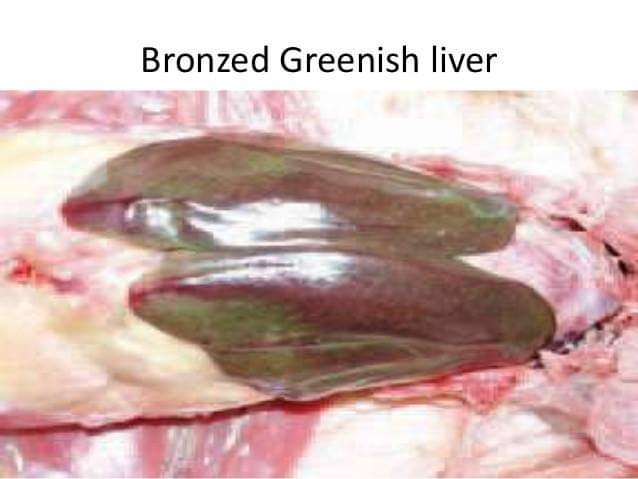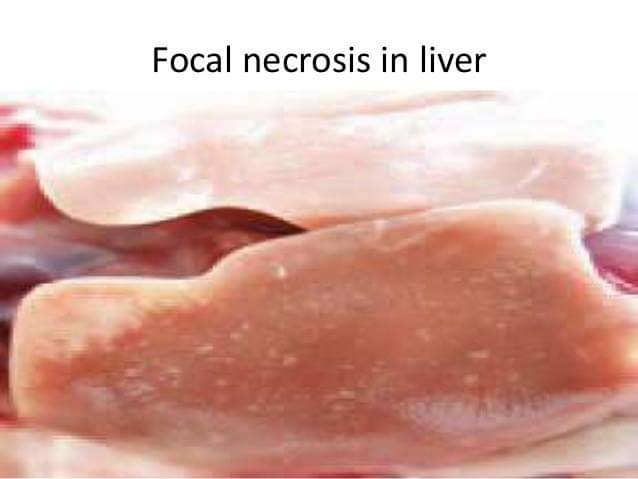SALMONELLA INFECTION IN POULTRY
There are 3 types of infection caused by the Salmonella microorganism.
These are pullorum disease, fowl typhoid disease and salmonellosis or para typhoid.
Salmonella infections are classified as nonmotile serotypes (S Pullorum, S Gallinarum) and the many motile paratyphoid Salmonella. These Salmonellainfections have a worldwide distribution.
In addition to the above nonmotile salmonellae, Salmonella paratyphoid infections in poultry are relatively common and have public health significance because of contaminated poultry product consumption. S Pullorum and S Gallinarum are highly host-adapted to chickens and turkeys. There are >2,500 nonhost-adapted species (paratyphoid) that may be transmitted to almost all animals.
1.Pullorum disease -(Salmonella pullorum)
Important symptoms:
Chicks hatched from infected egg, moribund or dead chick may be seen in the incubator. Sometimes disease is not seen for 5-10 days. Peak mortality during second or third week. Affected birds may exhibit a shrill cry when voiding excreta, which is white or greenish brown. Infection spread within the flock for a long time without any distinct signs. Reduction in egg production, fertility and hatchability.
Signs:
• Inappetance.
• Depression.
• Ruffled feathers.
• Closed eyes.
• Loud chirping.
• White diarrhoea.
• Vent pasting.
• Gasping.
• Lameness.
Post-mortem lesions:
• Grey nodules in lungs, liver, gizzard wall and heart.
• Intestinal or caecal inflammation.
• Splenomegaly.
• Caecal cores.
• Urate crystals in ureters.
Diagnosis
Isolation and identification. In clinical cases direct plating on Brilliant Green, McConkey and non-selective agar is advisable. Enrichment procedures usually rely on selenite broth followed by plating on selective media.


Differentiate from Typhoid, Paratyphoid, paracolon, other enterobacteria, chilling and omphalitis
Specimens to be collected
Ailing bird or freshly dead birds, or spleen, liver and intestine on ice from dead birds.
Treatment
No treatment is likely to effect complete elimination of carrier from infected birds.
Sulphadiazine, Sulphamerazine, sulphapyrazine, Sulphamethazine are the most effective in chicken (not in turkey poults). Furazolidone is effective. Also chloramphenicol, colistin and apromycin are effective. No vaccination practised and all positive birds may be disposed off by slaughter. Birds recently vaccinated with S. gallinarum (9R) may give low titre. Since Tran ovarian transmission of organism is there, only eggs from salmonella free flock should be used for hatching.
Amoxycillin, poteniated sulponamide, tetracylines, fluoroquinolones.
Prevention
Eradication from breeder flocks. As with other salmonellae, recovered birds are resistant to the effects of infection but may remain carriers. Vaccines are not normally used as they interfere with serological testing and elimination of carriers.
2.Fowl typhoid – (S.gallinarum)
Important symptoms
Chicks hatched from infected egg, moribund or dead chick may be seen in the incubator. Sometimes disease is not seen for 5-10 days. Peak mortality during second or third week. Affected birds may exhibit a shrill cry when voiding excreta, which is white or greenish brown. Infection spread within the flock for a long time without any distinct signs. Reduction in egg production, fertility and hatchability. Birds show diarrhea and greenish faeces and systemic disturbances.
Signs:
• Dejection.
• Ruffled feathers.
• Inappetance.
• Thirst.
• Yellow diarrhoea.
• Reluctance to move.
Post-mortem lesions
• Bronzed enlarged liver with small necrotic foci, and/or congestion.
• Engorgement of kidneys and spleen.
• Anaemia.
• Enteritis of anterior small intestine.
Diagnosis:
Isolation and identification. In clinical cases direct plating on Brilliant Green, McConkey and non-selective agar is advisable. Enrichment procedures usually rely on selenite broth followed by plating on selective media. Tube and rapid plate agglutination tests have been the standard serological tests for many years but have only been validated for chickens. LPS-based Elisa assays have been developed but not widely applied commercially. Differentiate from Pasteurellosis, pullorum disease and coli-septicaemia.
, clinical observation and necropsy findings (Bronze liver
Treatment:
Amoxycillin, potentiated sulponamide, tetracylines, fluoroquinolones.
Prevention:
Biosecurity, clean chicks. As with other salmonellae, recovered birds are resistant to the effects of infection but may remain carriers. Vaccines for fowl typhoid have been used in some areas, both live (usually based on the Houghton 9R strain) and bacterins
Specimens to be collected
Ailing bird or fresh carcass or liver, spleen and intestine from freshly dead birds by special messenger on ice
Control / Treatment
Sulpha-TMP drugs, Quinelone group are used. Nitrofurans (Furazolidone) are used with some success.
- Killed vaccine,
- Live vaccine (9 R strain).
Drugs when used as prophylactic agent, 10 days withdrawal period before slaughter.
Salmonellosis or Paratyphoid Infections
Salmonellae bacteria other than the species specific sero-types S. Pullorum, S. Gallinarum, and also other than S. Enteritidis and S. Typhimurium (which are considered separately), are capable of causing enteritis and septicaemia in young birds. Sero-types vary, but S. Derby, S. Newport, S. Montevideo, S. Anatum, S. Bredeney are among the more common isolates. Even if these infections do not cause clinical disease, their presence may be significant with respect to carcase contamination as a potential source of human food poisoning. They infect chickens, turkeys and ducks worldwide.
Morbidity is 0-90% and mortality is usually low. The route of infection is oral and transmission may be vertical as a result of shell contamination. Regardless of the initial source of the infection, it may become established on certain farms, in the environment or in rodent populations. Many species are intestinal carriers and infection is spread by faeces, fomites and feed (especially protein supplements but also poorly stored grain). Certain sero-types are prone to remain resident in particular installations (e.g. S. Senftenberg in hatcheries). The bacteria are often persistent in the environment, especially in dry dusty areas, but are susceptible to disinfectants that are suitable for the particular contaminated surfaces and conditions, applied at sufficient concentrations. Temperatures of around 80°C are effective in eliminating low to moderate infection if applied for 1-2 minutes. This approach is often used in the heat treatment of feed. Predisposing factors include nutritional deficiencies, chilling, inadequate water, other bacterial infections and ornithosis (in ducks).
Signs:
• Signs are generally mild compared to host-specific salmonellae, or absent.
• Dejection.
• Ruffled feathers.
• Closed eyes.
• Diarrhoea.
• Vent pasting.
• Loss of appetite and thirst.
Post-mortem lesions
• In acute disease there may be few lesions.
• Dehydration.
• Enteritis.
• Focal necrotic intestinal lesions.
• Foci in liver.
• Unabsorbed yolk.
• Cheesy cores in caecae.
• Pericarditis.
Diagnosis:
Isolation and identification. In clinical cases direct plating on Brilliant Green and McConkey agar may be adequate. Enrichment media such as buffered peptone followed by selective broth or semi-solid media (e.g. Rappaport-Vassiliadis) followed by plating on two selective media will greatly increase sensitivity. However this has the potential to reveal the presence of salmonellae that are irrelevant to the clinical problem under investigation. Differentiate from Pullorum/Typhoid, other enterobacteria.
Treatment:
Sulphonamides, neomycin, tetracyclines, amoxycillin, fluoroquinolones. Good management. Chemotherapy can prolong carrier status in some circumstances.
Prevention:
Uninfected breeders, clean nests, fumigate eggs, all-in/all-out production, good feed, competitive exclusion, care in avoiding damage to natural flora, elimination of resident infections in hatcheries, mills, breeding and grow-out farms. Routine monitoring of breeding flocks, hatcheries and feed mills is required for effective control. Infection results in a strong immune response manifest by progressive reduction in excretion of the organism and reduced disease and excretion on subsequent challenge.
Vaccines are not generally used for this group of infections.
Compiled & Shared by- Team, LITD (Livestock Institute of Training & Development)
Image-Courtesy-Google
Reference-On Request.


